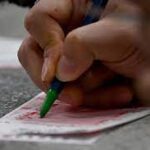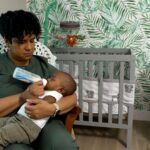New Gene Therapy May Be Cure for ‘Bubble Boy’ Disease

SATURDAY, Dec. 9, 2017 (HealthDay News) — Babies born with the immune-system ravaging "bubble boy" disease have had to spend their too-often-short lives in germ-free isolation, lest something as simple as a common cold virus fell them with a fatal infection.
But after decades of research, doctors now believe they have created a cure for severe combined immunodeficiency (SCID).
Six out of seven infants treated using a newly crafted gene-based therapy already are out of the hospital and leading normal childhoods at home with family, said lead researcher Dr. Ewelina Mamcarz, an assistant member of the faculty in the Bone Marrow Transplant Department at St. Jude Children's Research Hospital in Memphis, Tenn.
"They left the hospital after four to six weeks and we're following these babies on an outpatient basis," Mamcarz said. The last infant is barely six weeks past treatment, and his immune system is still in the process of constructing itself.
The results so far indicate that Mamcarz and her colleagues have cured these infants, said Jonathan Hoggatt, an assistant professor of stem cell research at Harvard Medical School.
"If they get all of their immune cells and the stem cells are lasting long-term, this is for all intents and purposes a cure," said Hoggatt, who was not involved with the study. "This isn't a repeated treatment. You do this once and you're done."
The new therapy focuses on X-linked SCID, the most common type of the disease. It only affects males because it is caused by a genetic defect found on the male X chromosome. It occurs in 1 out of every 54,000 live births in the United States, Mamcarz said.
SCID was first brought to public attention after the release of "The Boy in the Plastic Bubble," a 1976 movie about the true-life story of a child born with the disease.
Boys born with X-SCID cannot produce any of the immune cells that defend the body against infection: T-cells, B-cells and natural killer (NK) cells.
Without treatment, these babies typically die by age 2, researchers said. About one-third of those who receive the best available treatment, a stem cell transplant, wind up dying by age 10.
The new treatment uses an inactivated form of HIV to introduce genetic changes into the patient's bone marrow cells. These changes fix the bone marrow so it starts doing its job, pumping out all three types of immune cells, explained senior researcher Dr. Brian Sorrentino, director of the Experimental Hematology Division at St. Jude Children's Research Hospital.
Researchers chose HIV as their vehicle because the virus naturally evolved to effortlessly infect human immune cells, "so we're co-opting this property for our own purposes," Sorrentino said.
Previous versions of this gene-based cure used a different mouse-derived virus, which tended to activate cancer-causing cells and produce leukemia in patients. The new HIV-based version does not have this effect, Sorrentino said.
But the virus is only part of the solution. Babies given this treatment also underwent "conditioning" using the chemotherapy drug busulfan to prepare their bone marrow to accept the genetic changes, researchers said.
People undergoing bone marrow transplants often receive chemo or whole-body radiation to kill off their damaged immune system, so it won't interfere with the new healthy immune cells being introduced, Hoggatt explained.
Previously, research teams had been reluctant to use chemotherapy in treating SCID because of the potential damage it could do to newborns, Hoggatt said. Doctors also believed the babies probably didn't need it.
"The thought was for SCID patients, they don't really have any immune cells so we don't need to do that," Hoggatt said.
However, X-SCID babies only achieved a partial cure when they received the viral treatment without chemo. Their T-cells came back, but not their B-cells or NK-cells, Sorrentino said.
"The B-cells wouldn't come back, and as a result many if not all these initial gene therapy babies would require a lifelong supplementation with antibody therapy, sometime every month or every six weeks, which is very expensive," Sorrentino said.
Computer-guided infusions allowed the researchers to give babies individual doses of busulfan that were just strong enough to prepare them for gene therapy, Sorrentino said.
The combination of the gene therapy with mild chemo appears to have restored all three types of immune cells in the babies, the researchers said.
The virus also appears to be successfully infiltrating the immune system. In some cases, more than 60 percent of all bone marrow stem cells carried the new corrective gene introduced by the virus, researchers say.
The researchers emphasize that the babies still need to be tracked, to make sure the treatment remains stable with no side effects. They'll also need to see how the babies respond to vaccination.
"Our oldest patient is now at about 15 months, and our youngest one is just several months," Sorrentino said. "We definitely need more follow-up time, to understand more about them. But based on what we're seeing at this early point, we think it's got a good chance of being a permanent fix."
The researchers were to present the findings Saturday at the American Society of Hematology's annual meeting, in Atlanta. Research presented at meetings is considered preliminary until published on a peer-reviewed journal.
More information
For more on SCID, visit the U.S. National Institutes of Health.
[contf] [contfnew] 
Health
[contfnewc] [contfnewc]
The post New Gene Therapy May Be Cure for 'Bubble Boy' Disease appeared first on News Wire Now.

















